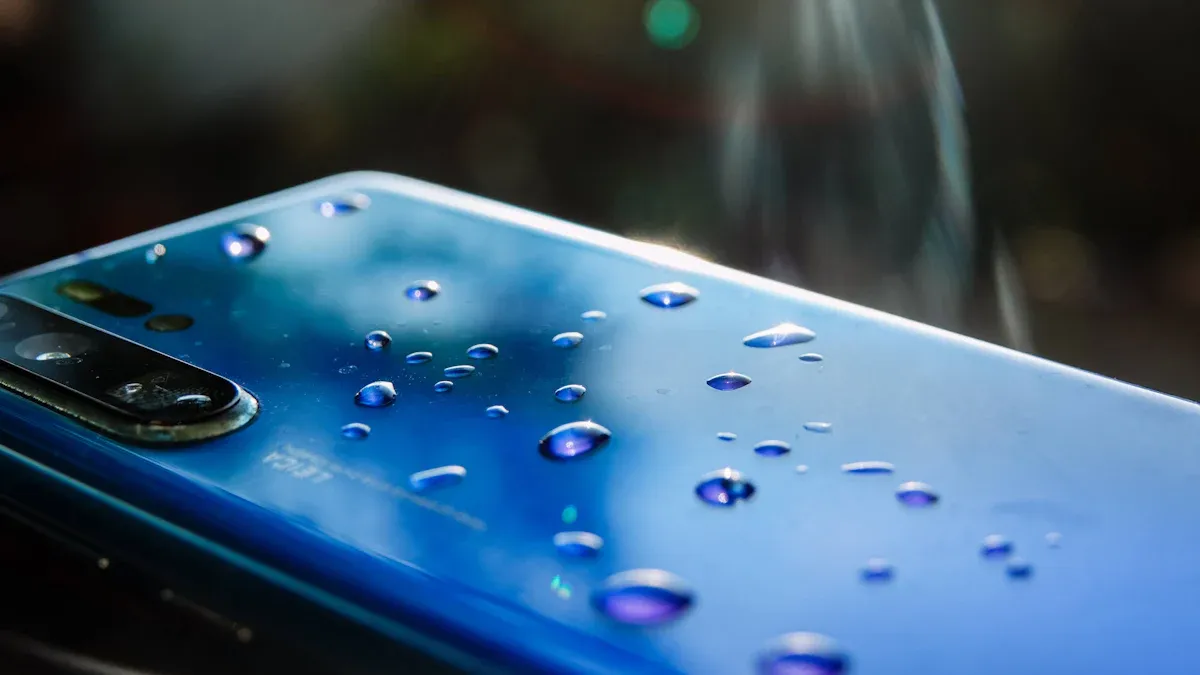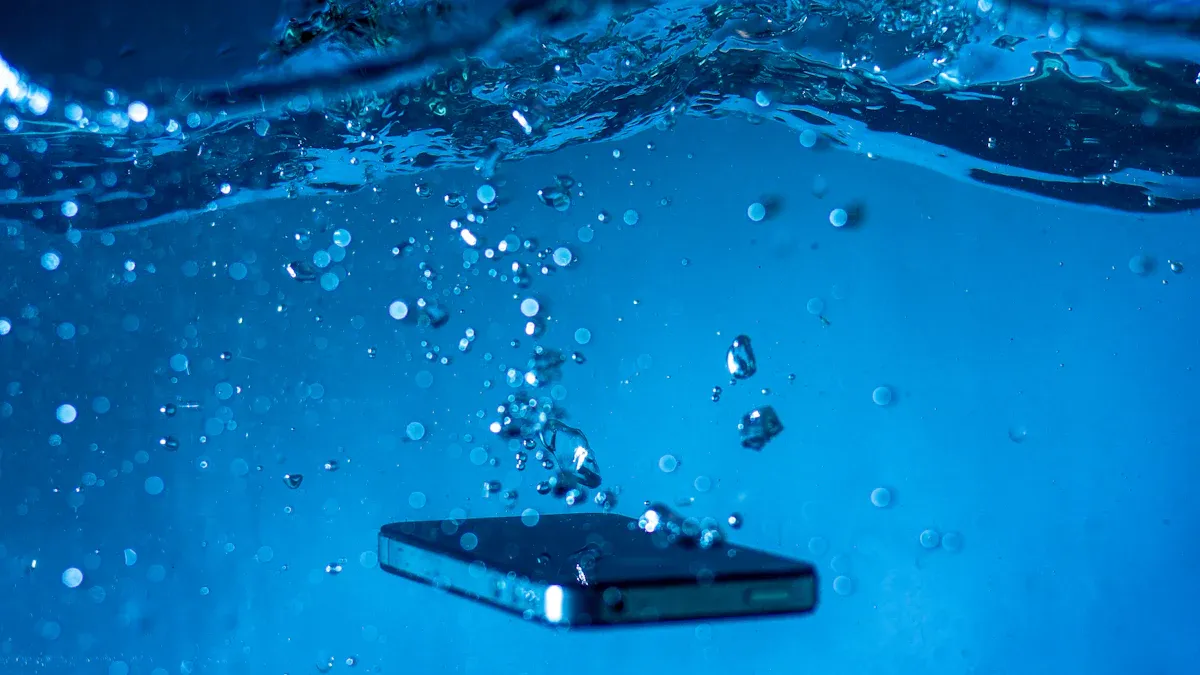
IP ratings help you understand how well a device resists water and dust. They ensure your industrial telephone can handle accidental spills or rain. For example, an IP65 outdoor telephone offers protection against water jets. Whether you use a waterproof telephone or a weatherproof telephone handset, knowing the rating helps you make informed choices.
المداخل الرئيسية
- IP ratings show how much your phone resists water and dust. Check the rating before buying, especially for outdoor activities.
- Higher IP ratings, like IP67 or IP68, mean stronger water protection. These ratings help you pick a tough phone for tough places.
- No phone is fully waterproof. Take care of your phone to keep its water resistance working well.
The IP Rating System Explained

What IP Ratings Measure
IP ratings measure how well a device resists dust and water. The system uses two numbers to define the level of protection. The first number shows resistance to solid particles like dust. The second number indicates how well the device handles water exposure. These ratings help you understand if your phone can survive in challenging environments. For example, a high IP rating means your phone can resist water splashes or even submersion.
Tip: Always check the IP rating before buying a phone, especially if you plan to use it near water or in dusty areas.
Breaking Down the Numbers
The IP rating system uses a simple format: "IP" followed by two digits. The first digit ranges from 0 to 6. A "0" means no protection against dust, while a "6" means complete dust resistance. The second digit ranges from 0 to 9. A "0" means no water protection, while a "9" means the device can handle high-pressure water jets. For instance, an IP68-rated phone is fully dustproof and can survive underwater for a specific time.
Common IP Ratings for Phones
Most modern smartphones come with IP67 or IP68 ratings. An IP67 phone can handle dust and survive in water up to one meter deep for 30 minutes. An IP68 phone offers even better water resistance, often surviving deeper submersion. These ratings make phones more durable for everyday use. If you need a waterproof telephone for outdoor activities, look for models with these ratings.
Real-World Protection and Limitations
How IP Ratings Protect Against Water Damage
IP ratings provide a clear understanding of how much water your phone can handle. Phones with high IP ratings, like IP67 or IP68, resist water by sealing critical components. This design prevents water from entering the device and damaging internal circuits. For example, an IP68-rated phone can survive accidental drops into a pool or sink. These ratings ensure your phone stays functional even in wet conditions.
Note: While IP ratings protect against water, they do not make your phone invincible. Always handle your device with care around water.
Limitations of ‘Waterproof’ Phones
No phone is truly waterproof. IP ratings indicate resistance, not complete immunity. Over time, seals and gaskets that protect your phone may wear out. High-pressure water, like from a hose, can still damage your device, even if it has a high IP rating. Additionally, saltwater or soapy water can corrode internal parts. Manufacturers test phones in controlled environments, which differ from real-world conditions.
Misconceptions About Water Resistance
Many people believe a waterproof telephone can survive any water exposure. This is not true. Water resistance depends on depth, duration, and type of water. For instance, an IP68 phone may handle fresh water but not saltwater. Some users also think water resistance lasts forever. In reality, wear and tear reduce its effectiveness. Understanding these limitations helps you avoid costly mistakes.
Handling and Maintaining a Waterproof Telephone

Examples of Phones with High IP Ratings
Phones with high IP ratings offer excellent protection against water and dust. Popular examples include the iPhone 14 Pro and Samsung Galaxy S23 Ultra. Both models feature an IP68 rating, making them resistant to dust and capable of surviving underwater for up to 30 minutes. Another great option is the Google Pixel 7 Pro, which also boasts an IP68 rating. These phones are ideal for outdoor enthusiasts or anyone who needs a durable device.
Tip: Check the specifications of your phone to confirm its IP rating. This ensures you know its limits before exposing it to water.
Best Practices for Using Water-Resistant Phones
Using a water-resistant phone requires careful handling. Avoid exposing it to saltwater, as it can corrode internal components. Rinse your phone with fresh water if it comes into contact with saltwater or other liquids. Keep the charging port dry before plugging in your device.
- Never assume your phone is completely waterproof.
- Avoid submerging it for longer than the recommended time.
- Use a protective case for added safety during outdoor activities.
These practices help you maximize the lifespan of your water-resistant phone.
Tips for Maintaining Water Resistance
Maintaining your phone’s water resistance involves regular care. Inspect the seals and gaskets for wear and tear. Replace them if they appear damaged. Avoid dropping your phone, as impacts can weaken its protective barriers.
Note: Manufacturers test phones in controlled environments. Real-world conditions may reduce water resistance over time.
Store your phone in a dry place when not in use. This prevents unnecessary exposure to moisture. Following these tips ensures your waterproof telephone remains reliable for years.
IP ratings help you understand how well your phone resists water and dust. They offer significant protection but have limits in real-world conditions. You can extend the life of your waterproof telephone by following best practices. Regular care ensures your device stays reliable and ready for any environment.
Tip: Always handle your phone with care to maintain its water resistance.
FAQ
What does "waterproof" mean for phones?
"Waterproof" means the phone resists water to a certain extent. It doesn’t guarantee complete protection. IP ratings define the specific level of water resistance.
Can you use a water-resistant phone underwater?
You can use it briefly underwater, depending on its IP rating. For example, an IP68 phone can survive up to 30 minutes in shallow water.
Note: Avoid saltwater or soapy water, as they can damage internal components.
How do you check if your phone’s water resistance is intact?
Inspect seals and gaskets for damage. Avoid exposing the phone to water if it has visible wear. Regular maintenance ensures its water resistance remains effective.
Tip: Use a protective case for added safety.


